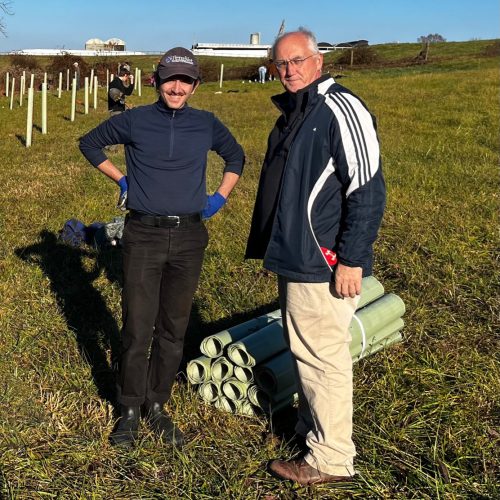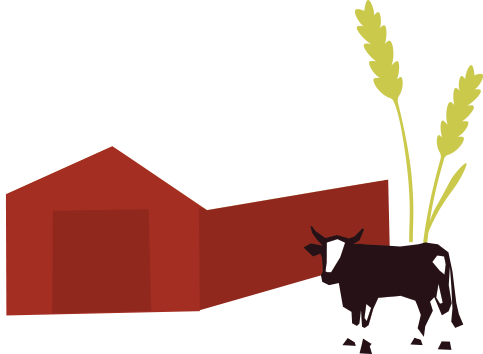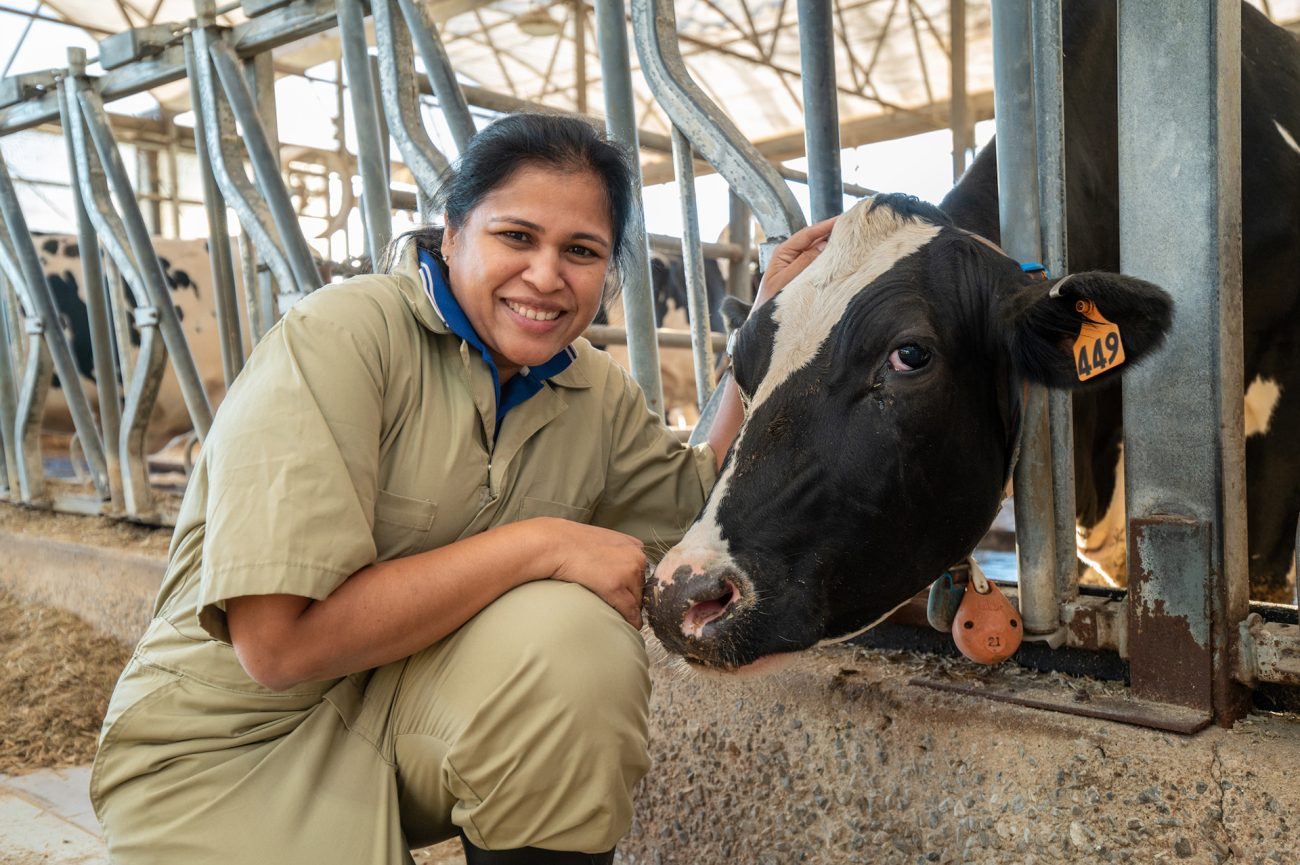Penn Vet’s Center for Stewardship Agriculture and Food Security (CSAFS) stands at the intersection of two fields—agriculture and climate—that often are at odds.
Consider the following: We all need to eat, and animal protein can be an invaluable source of nutrition, especially in areas such as the Global South, where malnutrition is rampant.
At the same time, animal agriculture contributes to greenhouse gas emissions, mainly from fertilizers, manure management, and methane release from cattle.
What is the solution?

“Farmers are entrusted by society with the resources to make food, including air, water, and land,” explains Tom Parsons, the Marie A. Moore Endowed Professor and inaugural director of the Center. “How can we help farmers be the best stewards of the resources they need to make our food?”
That is the question being answered at CSAFS, an interdisciplinary initiative founded two years ago at Penn Vet’s New Bolton Center (NBC) campus in Kennett Square, Pennsylvania. The Center is a natural fit for Penn Vet, which plays an important role in advancing animal agriculture in Pennsylvania and beyond. Home to a working swine center and dairy farm, NBC has a history of innovation and contributions to best practices in animal health and productivity.
An Interdisciplinary Approach
CSAFS draws on the expertise of Penn Vet faculty who work in nearly 20 agriculture-related specialties, as well as University faculty from multiple schools, centers, and programs on the main campus.
 “These are difficult and complicated problems that are often interdisciplinary in nature. Our goal is to bring some of the best people in the world that we have here at Penn—engineers, landscape architects, business and public health people, and of course, veterinarians—to think about agriculture in the most informed way,” Parsons adds.
“These are difficult and complicated problems that are often interdisciplinary in nature. Our goal is to bring some of the best people in the world that we have here at Penn—engineers, landscape architects, business and public health people, and of course, veterinarians—to think about agriculture in the most informed way,” Parsons adds.
The Center perfectly illustrates the University’s commitment to working across disciplines to solve challenging problems, one of the key principles of Penn’s strategic framework, In Principle and Practice.
Reducing Agriculture’s Environmental Impact
Penn’s Regenerative Agriculture Alliance is a research community co-founded by CSAFS that brings together multiple campus partners to promote the restoration and revitalization of farms and neighboring ecosystems to ensure long-term productivity.
 Working together, the team designed a land-use plan to help protect the headwaters of the local White Clay Creek watershed, improve ecosystem services, and feed cows. The innovative plan embraces several elements: riparian buffers (strips of vegetation planted next to streams or other bodies of water), silvopasture (integrating trees into pastureland), and adaptive grazing (carefully controlling the timing and intensity of grazing and the number of cows). Over the last year, volunteers have helped plant over 4,000 trees and shrubs on an underutilized piece of farmland at NBC. The long-term goal is to replicate this agroforestry model on other farms.
Working together, the team designed a land-use plan to help protect the headwaters of the local White Clay Creek watershed, improve ecosystem services, and feed cows. The innovative plan embraces several elements: riparian buffers (strips of vegetation planted next to streams or other bodies of water), silvopasture (integrating trees into pastureland), and adaptive grazing (carefully controlling the timing and intensity of grazing and the number of cows). Over the last year, volunteers have helped plant over 4,000 trees and shrubs on an underutilized piece of farmland at NBC. The long-term goal is to replicate this agroforestry model on other farms.
But in the meantime, as these trees and shrubs grow on the NBC campus, researchers will study grazing opportunities for NBC’s dairy cows, their benefits to the local environment, and their climate impact.
Another area of research originating out of CSAFS focuses on reducing greenhouse gas emissions from animal agriculture. Cows are significant culprits, since they burp out methane, which damages the environment.
Our goal is to bring some of the best people in the world, who we have here at Penn—engineers, landscape architects, business and public health people, and of course, veterinarians—to think about agriculture in the most informed way.”
Tom Parsons
Director, Center for Stewardship Agriculture and Food Security
Dipti Pitta, the Mark Whittier and Lila Griswold Allam Associate Professor, is conducting studies to help us understand how methane is formed in a cow’s gut and how we can safely reduce it without altering the cow’s health and production. In one recent investigation, Pitta and her team identified the attributes of cows that emit less methane than average. “Knowing these characteristics could enable us to selectively breed low methane emitting cows,” Pitta explains.

Pitta’s team of investigators is also examining how supplements—for example, red seaweed—added to the cows’ diets affect the animals’ gut microbiome and, thus, the amount of methane they produce. In another study, Pitta’s group tested a special probiotic “cocktail” that was developed in the lab on commercial dairy herds to determine its effectiveness in mitigating methane emissions. Together, these investigations promise to benefit farmers and make animal agriculture more sustainable.
“The Center was conceived around the dynamic tension between the need to feed the world and to do right by it,” Parsons notes. “Rather than being considered as part of the problem, we’d love to make agriculture part of the solution to a resilient, sustainable, and equitable future.”
The Center for Stewardship Agriculture and Food Security relies on philanthropic support to fulfill its mission and make an impact.
For more information on how you can support the Center, contact Jonathan Evans, Interim Associate Dean for Advancement, Penn Vet, at (215) 898-1481 or via email.





